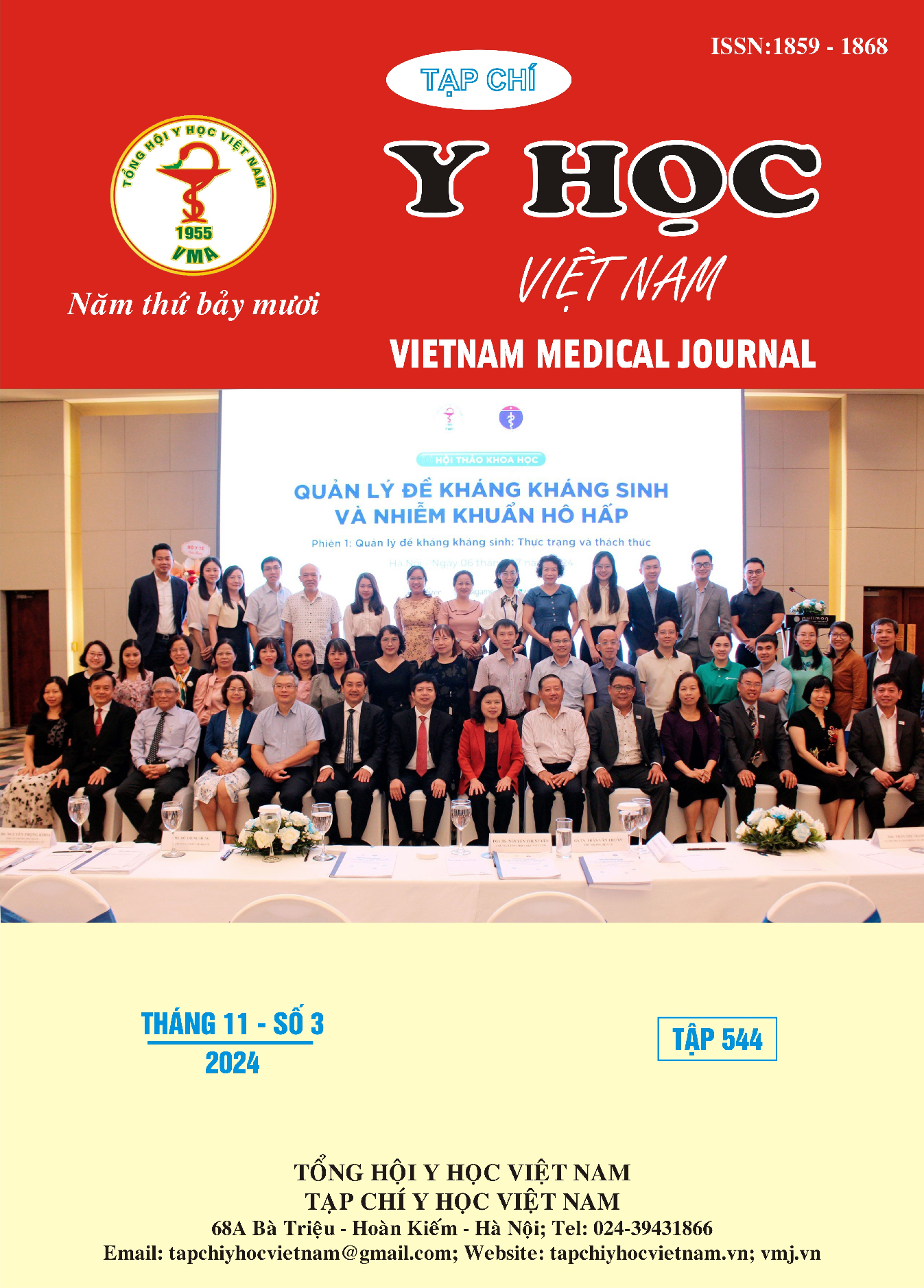CORRELATION BETWEEN PLASMA NESFATIN-1 CONCENTRATIONS AND CLINICAL INDICATORS IN A GROUP OF PATIENTS WITH DIABETES (NEWLY DETECTED, UNTREATED AND TREATED) AT THE 19-8 HOSPITAL
Main Article Content
Abstract
Objective: Determine the concentration of Nesfatin-1 in serum and the relationship between Nesfatin-1 concentration and some clinical parameters in a group of patients with type 2 diabetes. Subjects and Methods of Research: The study was conducted on 60 patients with type 2 diabetes, divided into 2 groups: newly detected, untreated type 2 diabetes, and type 2 diabetes treated at the 19-8 Hospital. The methods used in the study included measuring the concentration of Nesfatin-1 using BioVendor, and conducting some clinical tests including BMI, WHR, age, and paraclinical tests (including HbA1c and blood glucose). Results: The concentration of Nesfatin-1 and blood glucose levels showed a statistically significant difference (p < 0.05) between the two groups of type 2 diabetes studied. In addition, the Nesfatin-1 index, along with the indices of age, BMI, WHR (waist-hip ratio), and HbA1c in the two study groups, did not show any statistically significant difference (p > 0.05). The study results also showed a positive correlation between blood glucose index and HbA1c and WHR (waist-hip ratio) in the T2DM groups (r = 0.68-0.75; p = 0.001 and r = 0.439; p = 0.015). Conclusion: Nesfatin-1 concentration and blood glucose levels were statistically significantly different between the two study groups. Nesfatin-1 concentration was positively correlated with clinical and paraclinical parameters with a significant difference.
Article Details
Keywords
Type 2 diabetes; Nesfatin-1; HbA1c; newly diagnosed; treated.
References
2. Olokoba AB, Obateru OA, Olokoba LB. Type 2 diabetes mellitus: a review of current trends. Oman medical journal. 2012 Jul;27(4):269.
3. Ayada CE, Toru ÜM, Korkut YA. Nesfatin-1 and its effects on different systems. Hippokratia. 2015 Jan;19(1):4.
4. Li Z, Gao L, Tang H, Yin Y, Xiang X, Li Y, Zhao J, Mulholland M, Zhang W. Peripheral effects of nesfatin-1 on glucose homeostasis. PloS one. 2013 Aug 15;8(8):e71513.
5. SHimizu HI, Oh S, Okada SH, Mori M. Nesfatin-1: an overview and future clinical application. Endocrine journal. 2009;56(4):537-43.
6. Jackson SL, Long Q, Rhee MK, Olson DE, Tomolo AM, Cunningham SA, Ramakrishnan U, Narayan KV, Phillips LS. Weight loss and incidence of diabetes with the Veterans Health Administration MOVE! lifestyle change programme: an observational study. The lancet Diabetes & endocrinology. 2015 Mar 1;3(3):173-80.
7. Kautzky-Willer A, Harreiter J, Pacini G. Sex and gender differences in risk, pathophysiology and complications of type 2 diabetes mellitus. Endocrine reviews. 2016 Jun 1;37(3):278-316.
8. Mohammad NJ, Gallaly DQ. Serum Nesfatin-1 in patients with type 2 diabetes mellitus: A cross sectional study. Zanco Journal of Medical Sciences (Zanco J Med Sci). 2020 Apr 30;24(1):1-7.
9. Mogharnasi M, TajiTabas A, Tashakorizadeh M, Nayebifar SH. The Effects of resistance and endurance training on levels of nesfatin-1, HSP70, insulin resistance and body composition in women with type 2 diabetes mellitus. Science & Sports. 2019 Feb 1;34(1):e15-23.


